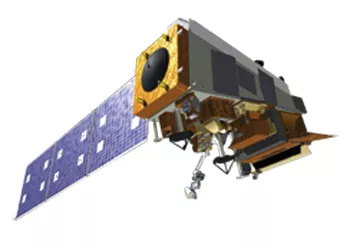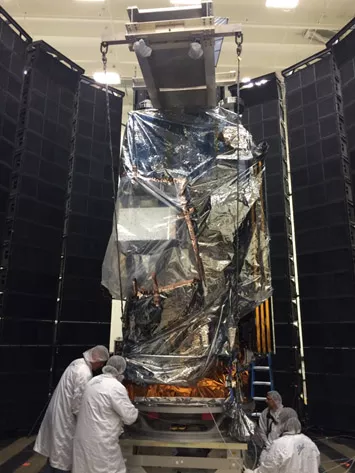Once operational, JPSS-1 will circle the Earth from pole-to-pole and cross the equator 14 times a day in its afternoon orbit—providing full global coverage twice a day.

NOAA’s JPSS-1 satellite, the second in the JPSS satellite series, is slated for launch in late 2017 aboard a Delta II launch vehicle from Vandenberg Air Force Base in California. To prepare, the spacecraft is currently going through an array of tests designed to simulate the extreme environments the satellite may experience during launch and while in orbit. During the testing period, JPSS-1 and its instruments will be subjected to a variety of harsh conditions, including acoustical bombardment, intense vibration, electromagnetic fields, thermal vacuum environments and ground system compatibility tests.
The tests are taking place at the Ball Aerospace & Technologies Corp. facility in Boulder, Colorado, where the spacecraft was assembled. The satellite will be placed inside a large vacuum chamber, where it will be exposed to a simulated space environment complete with extreme hot and cold temperatures ranging from 10 degrees Celsius above and below what it could experience in space. The satellite will also undergo vibration and acoustic testing to simulate the experience of launching into space aboard a rocket, and electromagnetic testing to ensure it is properly protected from electromagnetic phenomena in space, such as solar flares.

“The environmental testing period marks the shift from the development and integration of the satellite to the final testing phases that will verify it is ready for the severities of launch and space operations before it is shipped to the launch site,” said Harry Cikanek, JPSS program director.
JPSS-1 takes advantage of the successful technologies developed through the NOAA/NASA Suomi NPP satellite and has a design life of seven years. Once operational, the satellite, which will then be known as NOAA-20, will circle the Earth from pole-to-pole and cross the equator 14 times a day in its afternoon orbit—providing full global coverage twice a day.
Beginning with the NOAA/NASA Suomi NPP satellite, the JPSS satellite series represents significant technological and scientific advances in environmental monitoring and will enable forecasters and scientists to monitor and predict weather patterns with greater accuracy. JPSS will also aid the study of long-term climate trends by extending the more than 30-year satellite data record.
JPSS is a collaborative program between the National Oceanic and Atmospheric Administration (NOAA) and its acquisition agent, the National Aeronautics and Space Administration (NASA). NOAA is responsible for managing and operating the JPSS program, and developing portions of the ground segment, while NASA is responsible for developing and building the JPSS instruments, spacecraft, and portions of the ground segment and providing launch services.